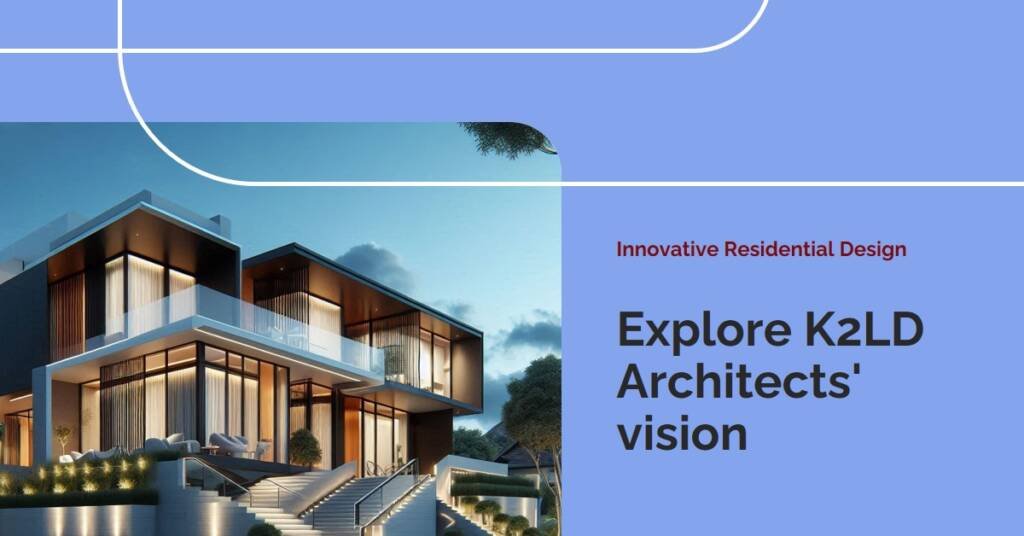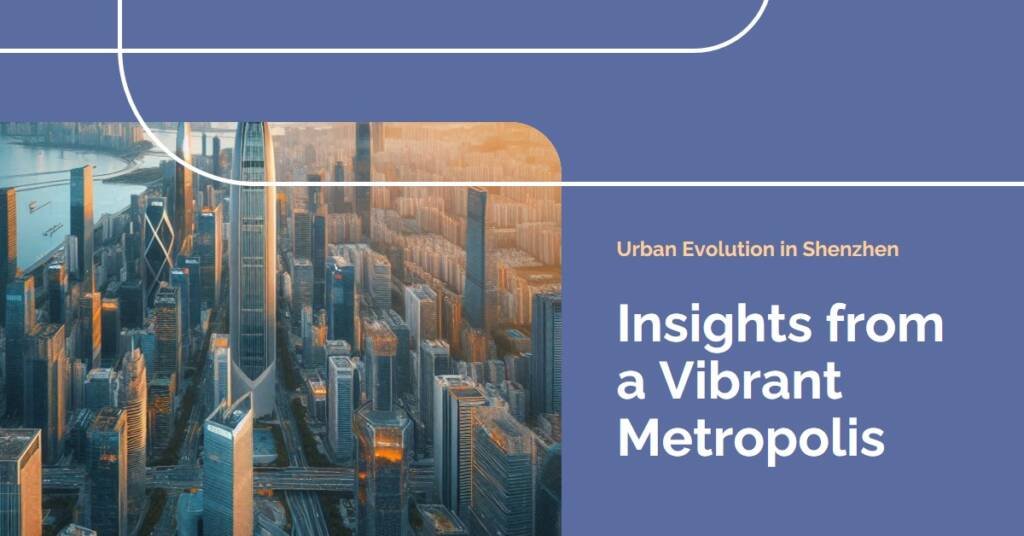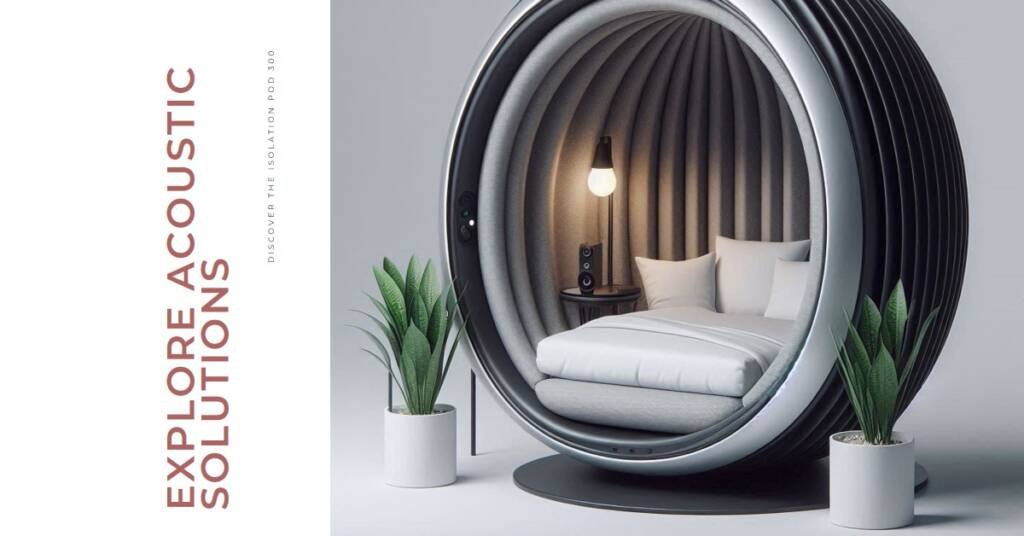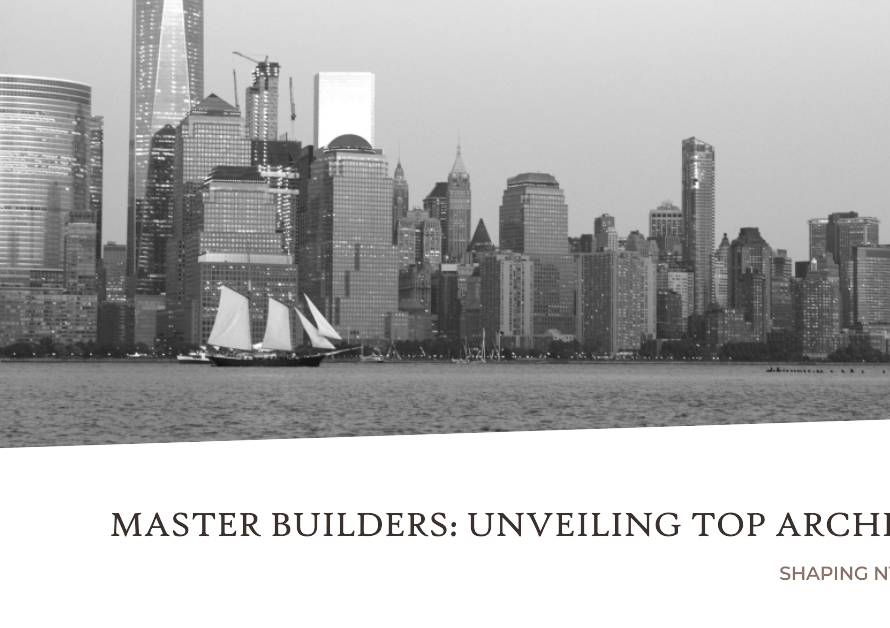
Table of Contents
- Introduction to the Winged House
- The Architectural Philosophy of K2LD
- Design Elements of the Winged House
- Sustainability Features Integrated into the Design
- Living Experiences in the Winged House
- Community and Context: The Winged House in its Environment
- Innovative Technology in the Winged House
- Challenges Faced During the Design Process
- Future of Residential Design: Lessons from the Winged House
Introduction to the Winged House
The Winged House represents a remarkable intersection of innovative residential design and harmonious integration with the natural environment. Conceived by K2LD Architects, this architectural masterpiece draws inspiration from organic forms found in nature, notably the elegance and functionality of wings. The design philosophy of the Winged House emphasizes fluidity and a direct connection to outdoor spaces, allowing inhabitants to experience a seamless transition between the home and its surrounding landscape.
K2LD Architects, acclaimed for their commitment to sustainability and modern aesthetics, seeks to redefine residential living through thoughtful architectural solutions. Their vision revolves around creating spaces that do not only fulfill the needs of their occupants but also resonate with the environment. The Winged House exemplifies this approach by utilizing materials and design strategies that promote energy efficiency and environmental responsiveness, ensuring that the home coexists harmoniously with its setting.
In contemporary architecture, the significance of such innovative designs cannot be overstated. The Winged House stands out as a paradigm for modern living, prioritizing natural light, ventilation, and views of the landscape while simultaneously fostering a sense of well-being and tranquility within. By embracing biomimicry and sustainable practices, K2LD Architects invites residents to engage with their surroundings in a meaningful way, promoting a lifestyle that values both comfort and ecological mindfulness.
The concept of the Winged House challenges traditional residential design norms, offering a fresh perspective on how homes can be constructed and experienced. As urban and suburban environments continue to evolve, the significance of integrating architectural design with natural elements becomes increasingly paramount. Through the Winged House, K2LD Architects not only showcases their innovative spirit but also sets a benchmark for future residential projects that aspire to harmonize with the splendor of nature.
The Architectural Philosophy of K2LD
K2LD Architects exhibit a distinct architectural philosophy that harmoniously intertwines sustainability, functionality, and aesthetics. This triad of principles is not merely a guideline; it is the foundation upon which their innovative projects, including the Winged House, are built. Sustainability occupies a pivotal role within K2LD’s design ethos. The architects understand that the built environment must coexist with nature, thereby influencing their decisions on materials, energy efficiency, and the use of space. This commitment to sustainable architecture is manifested in structures that not only minimize their environmental footprint but also foster a healthy living environment for inhabitants.
Functionality is another cornerstone of K2LD’s philosophy. Their designs prioritize user experience, ensuring that every space serves its purpose effectively while adapting to the needs of those who occupy it. The functional aspects of the Winged House are particularly noteworthy, as the layout promotes seamless flow between indoor and outdoor areas. This connection to the external environment enriches the living experience and enhances the overall utility of the design. By emphasizing functionality, K2LD Architects make certain that their structures are not only visually appealing but also practical and adaptable to contemporary lifestyles.
Aesthetics is the final element in K2LD’s architectural framework. The team believes that beautiful spaces contribute significantly to the well-being of their occupants. The Winged House exemplifies this belief through its innovative design, which integrates striking lines and captivating forms that redefine traditional boundaries of architecture. Aspects such as natural lighting, ventilation, and site orientation are thoughtfully considered to create serene and inviting living spaces. K2LD Architects demonstrate that effective architecture arises from the successful interplay of sustainability, functionality, and aesthetics, ultimately achieving remarkable designs that resonate with both their environment and their users.
Design Elements of the Winged House
The Winged House, designed by K2LD Architects, exemplifies innovative residential design through its distinctive geometry and strategic use of space. One of the most notable features of this residence is its unique angular form, which not only serves an aesthetic purpose but also allows for optimal orientation to natural light and ventilation. The dynamic roofline and wing-like overhangs create visual interest and add an element of fluidity to the structure, setting it apart from conventional residential designs.
Another key aspect of the Winged House is its open-plan layout. This design choice blurs the boundaries between different living spaces, promoting seamless transitions between areas dedicated to relaxation, dining, and social interaction. The spatial arrangement fosters a sense of community within the home while simultaneously allowing for flexibility in how the spaces are utilized. Each room flows into the next, encouraging a lifestyle that is both functional and enjoyable.
A hallmark of the Winged House is its extensive use of glass. Featuring large windows and sliding doors, this architectural element enhances the connection to the surrounding environment while flooding the interiors with natural light. This transparency creates a sense of continuity between indoor and outdoor areas, effectively bringing nature into the living spaces. The outdoor terraces and landscaped gardens are designed to be an extension of the indoor environment, allowing residents to engage with nature effortlessly. This thoughtful integration fosters an atmosphere of tranquility and serenity, making the home not only a place to live but also a sanctuary.
Overall, the harmonious balance of form, space, and material in the Winged House illustrates K2LD Architects’ commitment to innovative residential design, creating a dwelling that truly redefines modern living.
Sustainability Features Integrated into the Design
The Winged House, crafted by K2LD Architects, stands not only as a beacon of innovative residential architecture but also as a paragon of sustainability. The incorporation of eco-friendly elements is paramount in the design ethos of this remarkable dwelling. One of the standout features is its use of energy-efficient materials, which significantly reduce the overall energy consumption of the house. By selecting sustainable building materials, the architects have ensured that the structure remains resilient while minimizing its environmental footprint.
Rainwater harvesting systems are another critical aspect of the Winged House’s design. This system captures and stores rainwater for various household applications, including irrigation and non-potable uses. By efficiently managing water resources, the Winged House promotes sustainable living while concurrently addressing the challenges posed by urban water scarcity. Such systems are essential in modern residential design, ensuring that homes not only serve their inhabitants but also the broader ecological landscape.
Moreover, solar panel technology integrated into the Winged House allows for harnessing renewable energy. The strategic placement of solar panels on the roof maximizes exposure to sunlight, thereby optimizing energy production. This feature enables the household to generate a significant portion of its electricity from a renewable source, following a commitment to reducing reliance on fossil fuels. In doing so, the Winged House aligns with global efforts to mitigate climate change and promotes a lifestyle that is more sustainable.
In conclusion, the Winged House exemplifies how sustainable features can be seamlessly integrated into residential design. The thoughtful inclusion of energy-efficient materials, advanced rainwater harvesting systems, and innovative solar technology not only enhances the living experience but also reflects a responsible approach to modern architectural practices.
Living Experiences in the Winged House
The Winged House, designed by K2LD Architects, represents an innovative approach to residential living, emphasizing a unique integration of indoor and outdoor spaces. This design enhances the overall living experience for residents, providing a harmonious environment that prioritizes well-being and comfort. One of the standout features of the Winged House is its thoughtful flow of space. The open-plan design promotes a sense of connectivity between different areas of the home, allowing for easy movement between zones dedicated to relaxation, dining, and recreation. This fluid layout is particularly beneficial in fostering familial interactions and social gatherings, as it encourages shared experiences within the living environment.
Natural light plays a critical role in elevating the sensation of spaciousness within the Winged House. Expansive windows and strategically placed skylights flood the interiors with sunlight, reducing the reliance on artificial lighting during the day. This abundance of natural light not only enhances the aesthetic appeal but also contributes to the psychological well-being of residents. Studies have shown that exposure to natural light can improve mood and increase productivity, making the Winged House an ideal setting for both relaxation and work.
Another notable aspect of the Winged House is the seamless connection to outdoor areas. Innovative design elements such as sliding glass doors and expansive terraces create a dialogue between the interior and exterior, allowing residents to enjoy the beauty of nature right from their living space. This integration with the outdoors not only expands the functional living area but also encourages outdoor activities and a healthier lifestyle. In essence, the Winged House is masterfully crafted to provide a living experience that harmonizes comfort, light, and nature, ultimately enhancing the quality of life for its inhabitants.
Community and Context: The Winged House in its Environment
The Winged House, designed by K2LD Architects, represents a harmonious convergence between innovative residential design and its surrounding environment. Situated within a thoughtfully selected landscape, the design effectively responds to both the local cultural dynamics and climatic conditions. Its architectural form is not merely a standalone artifact but a reflective interpretation of the rich contextual tapestry that envelopes it.
One of the notable aspects of the Winged House is its integration into the existing topography. The architecture appears to emerge from the land, rather than imposing itself upon it. Strategically positioned over varied elevations, the house captures natural light and maximizes natural ventilation, thereby enhancing its energy efficiency. The Winged House’s orientation is instrumental in ensuring that outdoor spaces receive optimal sunlight while creating shaded areas that promote comfortable living conditions during warmer months.
Furthermore, K2LD Architects have taken into consideration the local culture in their design approach. By incorporating elements that resonate with traditional motifs and materials typical to the region, the design fosters a sense of belonging. The selection of local materials not only minimizes the carbon footprint but also strengthens the connection between the house and the community. This thoughtful architectural dialogue celebrates the identity of the area, inviting residents and visitors alike to engage with the space.
The relationship of the Winged House with its environment extends beyond mere aesthetics; it enriches the community’s social fabric, encouraging interactions through shared outdoor spaces. The design promotes community connectivity, ensuring that the essence of togetherness is palpable. Hence, it stands as a model for future residential projects, emphasizing that sustainable design encompasses not just the physical structure, but also the emotional and social dimensions of living within a community context.
Innovative Technology in the Winged House
The Winged House by K2LD Architects represents a pinnacle of modern residential design, integrating innovative technology seamlessly into its architectural framework. This forward-thinking approach employs smart home systems that optimize convenience and energy efficiency. By incorporating state-of-the-art technology, homeowners can manage various aspects of their living environment, from lighting and security to heating and cooling, all through a user-friendly interface. This level of control is essential in enhancing the overall living experience, as it allows occupants to create a personalized atmosphere tailored to their needs.
Climate control is another critical aspect of the technological innovations featured in the Winged House. Advanced HVAC systems are utilized to ensure optimal thermal comfort while minimizing energy consumption. These systems employ sensors to monitor temperature variations and adjust their operations accordingly, thus reducing unnecessary energy expenditure. By leveraging these smart technologies, the Winged House not only promotes a sustainable lifestyle but also allows residents to enjoy an environment that remains comfortable throughout the year.
Additionally, automated features play a significant role in enhancing the functionality of the Winged House. For instance, automated blinds and shading systems respond to sunlight levels, helping to reduce glare and maintain a pleasant indoor environment. Such features not only contribute to energy savings but also preserve the home’s architectural integrity. The use of cutting-edge materials enables these technologies to be integrated discreetly, ensuring that the aesthetic vision of the Winged House remains intact while augmenting its user-friendliness.
In essence, the innovative technologies employed in the Winged House exemplify how modern residential design can harmonize advanced functionality with architectural beauty. By embracing these cutting-edge solutions, K2LD Architects has redefined the concept of home living, creating an environment that prioritizes both comfort and sustainability.
Challenges Faced During the Design Process
The design process for the Winged House by K2LD Architects was not without its challenges. One of the primary issues encountered was site limitations. The chosen location presented a narrow and sloping plot, which required innovative architectural solutions. The architects had to navigate the constraints posed by this topography while maximizing the living space. By employing a stepped design approach, K2LD was able to create a vertical living experience that integrated the house seamlessly into its environment.
Additionally, regulatory constraints posed significant challenges during the design phase. Local zoning laws and building regulations necessitated a comprehensive understanding of the rules governing construction, including height restrictions and land use. To address these regulatory considerations, the architects engaged in detailed discussions with local authorities and stakeholders. This collaborative approach enabled them to achieve compliance without compromising the visionary aspects of the design.
Environmental considerations also played a crucial role in shaping the design of the Winged House. With increasing focus on sustainability, K2LD Architects prioritized eco-friendly materials and energy-efficient systems in their overall design strategy. Addressing potential environmental impacts, such as water runoff and habitat disturbances, the design incorporated landscaping techniques to enhance biodiversity while ensuring that the structure harmonized with its natural surroundings. The integration of passive design principles allowed for optimal thermal performance and lighting, thereby reducing reliance on artificial energy sources.
Creative problem-solving was essential in overcoming these challenges, and the final design of the Winged House is a testament to K2LD Architects’ commitment to innovation in residential architecture. Each constraint became an opportunity for inventive solutions, ultimately leading to a harmonious blend of functionality, aesthetics, and sustainability.


Future of Residential Design: Lessons from the Winged House
The Winged House, an innovative residential design by K2LD Architects, presents significant implications for the future of residential architecture. As urban environments continue to evolve, the demand for unique living spaces that harmonize with nature and promote sustainability becomes increasingly crucial. The lessons derived from the Winged House highlight how creativity and thoughtful design can redefine residential living and influence broader architectural trends.
One key takeaway from the Winged House is the integration of natural elements into living spaces. This approach not only enhances the aesthetic appeal but also contributes positively to the inhabitants’ well-being. By incorporating features such as large windows, open-air living areas, and green roofs, future residential designs can foster a connection between indoor and outdoor environments. This blurring of boundaries supports the concept of biophilic design, which emphasizes the necessity of nature in urban settings to promote mental and emotional health.
Moreover, the Winged House demonstrates a forward-thinking approach to sustainability. Utilizing energy-efficient materials and renewable energy sources aligns with contemporary architectural principles focused on reducing environmental footprints. As climate change becomes an increasingly pressing issue, future designers must prioritize sustainable practices. The lessons learned from K2LD Architects’ work can serve as a model for how residential buildings can make a significant impact on urban development, encouraging a shift toward eco-friendly living solutions.
In addition, the adaptability of the Winged House concept reveals the importance of flexible spaces that can accommodate changing lifestyles. As society transforms and evolves, the need for homes that can grow with their inhabitants is vital. Designers can take cues from this project to create multi-functional spaces that resonate with modern family dynamics, thus ensuring their relevance and longevity in the residential market.
In conclusion, the Winged House by K2LD Architects offers valuable lessons that can inform the future of residential design. By embracing innovative approaches and sustainable practices, the architectural community can create living spaces that not only meet the needs of today but also pave the way for a more environmentally conscious tomorrow.


